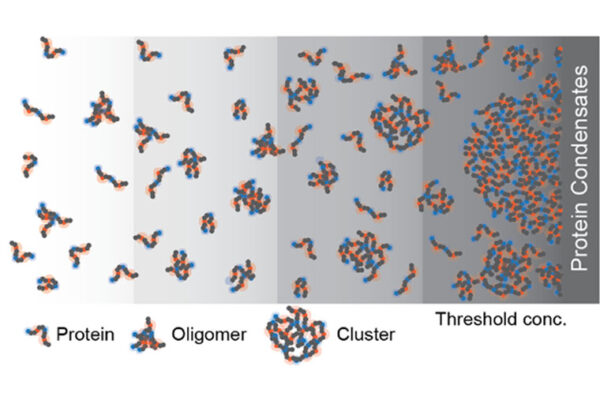
Human cells contain condensed bundles of proteins and nucleic acids called condensates, delineated by clear boundaries, known as interfaces.
Condensates talk to one another through their interfaces. New research has uncovered unique features of interfaces of model condensates. The findings are important because the interfaces are relevant to the seeding of fibrillar conformations associated with neurodegenerative diseases such as amyotrophic lateral sclerosis (ALS).
A team of researchers led by Rohit Pappu, the Gene K. Beare Distinguished Professor and director of the Center for Biomolecular Condensates at the McKelvey School of Engineering at Washington University in St. Louis, recently focused on defining the features of those boundaries. The research, driven by Mina Farag, an MD/PhD student in the Pappu lab and first author of the paper, was generated in collaboration with Tanja Mittag and her lab at St. Jude Children’s Research Hospital. The results were published in Nature Communications Dec. 13.
A surprising finding was that interfaces are thick and defined by specific shape and size preferences at the molecular level, Pappu said. Within condensates, the molecules’ organization resembles the hub-and-spoke network structure of commercial airports, he said.
Read more about the research on the engineering website.


